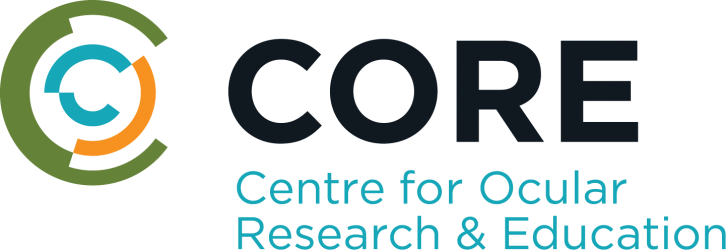Publications
Showing 25 results out of 70 in total.
Jones L. Contact lenses: Beyond vision correction Global Specialty Lens Symposium, Las Vegas, Jan 16, 2025
Jones L. Clinical pearls in ocular disease: TFOS DEWS II guidelines update Webinar, May 15, 2025
Jones L. DEWS III Management & Therapy report ISCKRS meeting, India. Webinar, Aug 1, 2025
Jones L. DEWS III: What’s changed? Alcon professional affairs and marketing teams, Forth Worth, USA, Aug 13, 2025
Jones L. Beyond Correction: A look at the future of contact lenses Contact Lens Spectrum 2025;40, 3 April: 17
Jones L, Alcon professional affairs team. A new modality in contact lens wear; smart or not? Alcon professional affairs team British Contact Lens Association Meeting, Birmingham, UK, Jun 4, 2025
Jones L, Koetting C. Dry eye pharmacological treatment update BCDO meeting, Vancouver, Canada, May 2, 2025
Jones L, Koetting C.
Dry eye pharmacological treatment update
2025
Jones L, Morgan P. Redefining contact lens prescribing: An evidence-based framework British Contact Lens Association Meeting, Birmingham, UK, Jun 5, 2025
Jones L, Subbaraman L. A new weekly disposable contact lens British Contact Lens Association Meeting, Birmingham, UK, Jun 6, 2025
Jones L, Subbaraman L. A new weekly disposable contact lens European launch meeting, Prague, Czechia, Oct 2, 2025
Jones, L., Craig, J. P., Markoulli, M., Karpecki, P,. Akpek, E. K., Basu, S., Bitton, E., Chen, W., Dhaliwal, D. K., Dogru, M., Gomes, J. A. P., Koehler, M., Mehta, J. S., Perez, V. L., Stapleton, F., Sullivan, D. A., Tauber, J., Tong, L.,Travé-Huarte, S., Wolffsohn, J. S., Alves, M., Baudouin, C., Downie, L., Giannaccare, G., Horwath-Winter, J., Liu, Z., Koh, S., Messmer,E., Otero, E., Villani, E., Watson, S., Yoon, K. C.
TFOS DEWS III Management and Therapy Report
American Journal of Ophthalmology 2025;Online ahead of print [ Show Abstract ]
This report provides an evidence-based review of current strategies to manage dry eye disease (DED). First-line management focuses on methods to replenish, conserve and stimulate the tear film, with an emphasis on ocular supplements, which remain the cornerstone of DED treatment. Meibomian gland dysfunction, a primary contributor to DED, is typically treated with warm compresses and a wide variety of in-office treatments, including device-driven technologies to warm the eyelids, intense pulsed light therapy, low-level light therapy and other new and emerging technologies. Lid hygiene treatments include lid wipes, anti-Demodex therapies, blepharoexfoliation and topical antibiotics.
DED caused by certain etiological drivers can benefit from anti-inflammatory therapies, including corticosteroids, T-cell immunomodulatory topical drugs and a wide variety of pharmacological agents, in addition to biologic tear substitutes such as autologous serum and platelet-rich plasma. Emerging therapies, such as neuromodulation via nasal neurostimulation and novel pharmacological treatments offer potential future options. Advanced options, including amniotic membrane grafts and complex surgical methods, provide options for severe or refractory cases. Lifestyle modifications, including optimized blinking, dietary supplementation and environmental adjustments, play a crucial role in long-term management. Patient education and adherence to treatment regimens remain essential for sustained symptom relief.
The TFOS DEWS III prescribing algorithm provides an evidence-based framework to offer guidance to clinicians in selecting relevant interventions based on disease etiology that aim to provide targeted management of the subtype of DED that an individual is experiencing.
Jones,D., Chow,A., Fadel,D., Gonzalez Meijome,J.M., Grzybowski,A., Kollbaum,P., Loughman,J. Wolffsohn,J.
IMI—Instrumentation for Myopia Management
Investigative Ophthalmology & Visual Science 2025;66(9):Article 7 [ Show Abstract ]
The rising prevalence of myopia has underscored the importance of early diagnosis and effective management strategies to control its progression and to prevent complications. Advancements in instrumentation enable clinicians to provide individualized evidence-based care for patients. Instrumentation for myopia control encompasses a wide range of technologies designed to assess refractive error, biometric parameters, including axial length, accommodative responses, as well as detailed assessment of ocular health. These tools offer clinicians the ability to move beyond traditional clinical techniques, providing more accurate, detailed, and repeatable measurements critical for the detection and monitoring of myopia progression. This allows for a personalized approach to treatment planning, enabling the selection and optimization of myopia control interventions. Furthermore, advanced imaging and real-time data visualization support patient education by fostering understanding, which may improve adherence to treatment plans. By adopting these technologies, clinicians can address the complexities of myopia management, deliver precise and effective care, and contribute to global efforts to curb the myopia epidemic. The integration of advanced instrumentation into clinical practice encourages early intervention and management strategies for patients at risk of becoming myopic (pre-myopia), as well as improving patient outcomes for myopic patients.
Kapadia,W., Nikhil,V., Ning,Q., Pei,Z., Phan,C.-M., Haines,L., Jones,L., Ren,C.
A novel microfluidic viscometer for measuring viscosity of ultrasmall volumes of Newtonian and non-Newtonian liquids
Journal of Micromechanics and Microengineering 2025;35(5):Article number 055005 [ Show Abstract ]
Viscosity is a critical fluid property that significantly influences fluid behavior and performance across various systems. Most commercial viscometers require relatively large sample volumes (on the order of milliliters), which restricts their utility in scenarios where only limited sample volumes are available. For instance, human tear fluid—essential for developing effective treatment strategies—is scarce (typically on microliters), especially in individuals with dry eye disease. To address this limitation, we present a novel microfluidic viscometer platform capable of measuring the viscosity of ultra-small volumes (i.e. ∼10 μl) of Newtonian and non-Newtonian fluids. The working principle is based on the Hagen-Poiseuille equation, incorporating the Weissenberg-Rabinowitsch-Mooney correction for slit-flow, and employs an optically transparent microfluidic chip integrated with supporting devices including a syringe pump, manifold, camera, and differential pressure transducer. Preliminary validation was conducted using glycerol solutions, artificial tears, and tear samples from dry and healthy eyes. This microfluidic viscometer holds promise for measuring the shear viscosity of small volumes of biofluid samples (e.g. synovial fluid, cerebrospinal fluid, tear films) or pharmaceuticals (e.g. monoclonal antibodies, ophthalmic drug delivery products) by developing surface coating materials appropriate for specific samples.
Lourenco Nogueira,C., Boegel,S.J., Shukla,M., Ngo,W., Hui,A., Jones,L., Aucoin,M.
Antiviral activity of contact lens care solutions and rub-and-rinse regimen against adenovirus
Optometry and Vision Science 2025;102(3):156-166 [ Show Abstract ]
SIGNIFICANCE
Although human adenoviruses are the leading cause of acute viral conjunctivitis, there is a lack of data surrounding the efficacy of contact lens care products against these viruses.
PURPOSE
This study investigates the antiviral activity of several commercially available contact lens care solutions against human adenovirus type 5 (Ad5).
METHODS
Six contact lens care solutions (Biotrue, Boston Simplus, OPTI-FREE Puremoist, Clear Care, cleadew, and cleadew GP) were investigated. Quantitative suspensions tests were conducted on Ad5 solutions after interaction with the different contact lens care solutions for 4 or 6 hours. For the hydrogen peroxide solution (Clear Care), interaction times of 0, 2, 4, and 6 hours prior to neutralization were also investigated. Finally, the impact of rubbing and rinsing of Ad5 contaminated contact lenses with the solutions was studied.
RESULTS
Solutions based on povidone-iodine demonstrated a more than 3-log reduction in virus after 4 and 6 hours of incubation. In contrast, hydrogen peroxide only demonstrated a 0.52-log reduction after 6 hours of incubation. Increasing the contact time with hydrogen peroxide increased Ad5 inactivation, with a 2.18-log reduction after 6 hours of incubation with the solution prior to neutralization. Nonoxidative systems did not demonstrate a significant log reduction after 4 hours of incubation. However, rubbing and rinsing of contact lenses using the nonoxidative systems reduced the virus counts from contaminated contact lenses to below the limit of quantification.
CONCLUSIONS
Povidone-iodine solutions have a significant effect on reducing the viability of Ad5. Hydrogen peroxide care solutions are effective only if unneutralized contact time is increased. Nonoxidative systems can be effective in combating contaminated lenses only with the addition of a rub-and-rinse step.
Luensmann D. Article Review: Challenges to the New Soft Contact Lens Wearer and Strategies for Clinical Management https://contactlensupdate.com/2025/06/25/article-review-challenges-to-the-new-soft-contact-lens-wearer-and-strategies-for-clinical-management/ 2025;84
Luensmann D, Kaiser Maharjan E. AOA 2025: Coverage of ametropia with a planned replacement soft contact lens portfolio Optometry Times 2025, Jun 27:
Luensmann D, Woods J, Jones L. Coverage of ametropia with a planned replacement soft contact lens portfolio AOA Optometry's Meeting, Minneapolis, USA, Jun 27, 2025 [ Show Abstract ]
BACKGROUND: Soft lens power ranges are often broad for spherical prescriptions, but there is typically less coverage for astigmatic prescriptions, particularly with multifocal lenses. This unequal coverage within a lens brand may mean refitting previously successful lens wearers with a different brand when they need a toric or multifocal correction. This could increase chair time and requires adaptation to a different lens fit, which could negatively impact lens comfort and/or handling and therefore patient satisfaction. This analysis reviewed the coverage of a specific planned replacement portfolio.
METHODS: In a secondary analysis, prescription data of 101,973 optometric clinic patients aged 14-70 years were evaluated: 59,631 female and 42,342 male . The prescriptions available in a planned replacement portfolio spanning spherical and toric prescriptions were evaluated to calculate the coverage in non-presbyopic and presbyopic age groups.
RESULTS: In the non-presbyopic group (age 14-39; n=47,195) and presbyopic group (age 40-70; n=54,778), astigmatism of at least -0.75DC was present in 39% and 44% of eyes respectively.
Spherical corrections are acceptable for eyes with no more than 0.50DC astigmatism. If a lens brand is available in single-vision prescriptions +6.00 to -12.00D and multifocal prescriptions +6.00 to -10.00D, they would cover 99.9% and 99.7% of eyes respectively.
Toric corrections are warranted for eyes with astigmatism of at least -0.75DC, and if a lens brand is available in single vision: sphere +6.00 to -9.00D and up to -2.75DC in all axes, and multifocal: sphere +4.00 to -6.00D and up to -1.75DC in all axes, plus up to -2.75DC in axes 90±20 and 180±20, these ranges would cover 95.3% and 92.3% of astigmatic eyes in the respective age groups.
This results in a total coverage of 97.3% across all age groups and prescriptions. In contrast, if the toric multifocal option was not available, the total brand coverage reduced to 78.3%.
CONCLUSION: This analysis demonstrates that robust coverage was achieved for both presbyopic and non-presbyopic populations in this planned replacement portfolio. Such high coverage helps facilitate a smooth transition and adaptation for practitioners and patients when needing to switch from single vision spherical lenses to toric and/or multifocal lenses.
Luensmann D, Woods J, Jones L. ePoster: Coverage of ametropia with a planned replacement soft contact lens portfolio AOA Optometry's Meeting, ePoster, May 29, 2025 [ Show Abstract ]
BACKGROUND: Soft lens power ranges are often broad for spherical prescriptions, but there is typically less coverage for astigmatic prescriptions, particularly with multifocal lenses. This unequal coverage within a lens brand may mean refitting previously successful lens wearers with a different brand when they need a toric or multifocal correction. This could increase chair time and requires adaptation to a different lens fit, which could negatively impact lens comfort and/or handling and therefore patient satisfaction. This analysis reviewed the coverage of a specific planned replacement portfolio.
METHODS: In a secondary analysis, prescription data of 101,973 optometric clinic patients aged 14-70 years were evaluated: 59,631 female and 42,342 male . The prescriptions available in a planned replacement portfolio spanning spherical and toric prescriptions were evaluated to calculate the coverage in non-presbyopic and presbyopic age groups.
RESULTS: In the non-presbyopic group (age 14-39; n=47,195) and presbyopic group (age 40-70; n=54,778), astigmatism of at least -0.75DC was present in 39% and 44% of eyes respectively.
Spherical corrections are acceptable for eyes with no more than 0.50DC astigmatism. If a lens brand is available in single-vision prescriptions +6.00 to -12.00D and multifocal prescriptions +6.00 to -10.00D, they would cover 99.9% and 99.7% of eyes respectively.
Toric corrections are warranted for eyes with astigmatism of at least -0.75DC, and if a lens brand is available in single vision: sphere +6.00 to -9.00D and up to -2.75DC in all axes, and multifocal: sphere +4.00 to -6.00D and up to -1.75DC in all axes, plus up to -2.75DC in axes 90±20 and 180±20, these ranges would cover 95.3% and 92.3% of astigmatic eyes in the respective age groups.
This results in a total coverage of 97.3% across all age groups and prescriptions. In contrast, if the toric multifocal option was not available, the total brand coverage reduced to 78.3%.
CONCLUSION: This analysis demonstrates that robust coverage was achieved for both presbyopic and non-presbyopic populations in this planned replacement portfolio. Such high coverage helps facilitate a smooth transition and adaptation for practitioners and patients when needing to switch from single vision spherical lenses to toric and/or multifocal lenses.
Michaud L, Jones D, Chow A.. Myopia Revisited: A Practical Learning Session with Panel Discussion Ontario Association of Optometrists, Symposium, March 29, 2025
Mitra,S., Kapur,V., Jones,L., Mitra,S. K.
Dynamics of an Artificial Tear Film on Contact Lenses in Response to a Moving Force Mimicking Fingertip Application
ACS Applied Materials & Interfaces 2025;17(44):61426-61438 [ Show Abstract ]
Globally, it is estimated that more than 140 million people wear contact lenses. As a result, users demonstrate varying levels of dexterity and consistency when inserting lenses, often requiring fine adjustments. Moreover, the diverse structure and quality of individuals' precorneal tear films lead to different tear film responses under various insertion conditions. In this work, we mimic such tear film dynamics using a force probe coupled with reflection interference contrast microscopy. We use an in-house prepared artificial tear film solution that mimics human tear film composition deposited on commercially available soft contact lenses. The probe is used to replicate contact forces that resemble the pressure and motion of a human fingertip during lens insertion. Our findings reveal that contact-induced deformations and resulting film morphologies are sensitive to the volume, i.e., thickness of the tear film: from localized wetting ridges with memory effects for thicker films to traveling deformations with permanent wrinkling for thinner films. In extremely thin films, we observe that film evaporation dominates over contact-driven dynamics, although mobile contact forces can locally reverse rupture spots in the tear film.
Morgan P, Woods CA, Tranoudis IG, Efron N, Jones L, Faccia L, Rivadeneira D, Grupcheva CN, Jones D, Rodriguez Cely LM, Santodomingo-Rubido J, Erdinest N, Jafari A, Montani G, Hori Y, Mulder J, van der Worp E, van Mierlo T, Ystenaes AE, Romualdez-Oo J, Abesamis-Dichoso C, Gonzalez-Meijome JM, Macedo-de-Araujo RM, Johansson O, Hsiao J, Nichols JJ.. International Contact Lens Prescribing in 2024 Contact Lens Spectrum 2025;40, January/February: 22-24, 26, 28-30
Ngo,W., Nagaarudkumaran,N., Huynh,C. B.
Refrigeration reduces instillation discomfort of a 0.09% cyclosporine A solution
Optometry and Vision Science 2025;102(1):14-19 [ Show Abstract ]
Significance: Topical cyclosporine A (CsA) for the treatment of dry eye disease is often associated with instillation discomfort, which may negatively influence patient adherence to therapy. This study found that refrigerating topical CsA reduced instillation discomfort compared with instillation of warm CsA. Thus, refrigerating CsA prior to instillation may improve patient experience when using CsA to manage dry eye disease.
Purpose: This study aimed to quantify instillation discomfort associated with cold or warm instillation of a 0.09% CsA.
Methods: Forty participants with symptomatic aqueous deficient dry eye were enrolled. A drop of cold (4°C) CsA was instilled in one eye, and a drop of warm (23°C) CsA was instilled in the other eye. The order and eye receiving the cold drop were randomized. Participants rated the discomfort of each eye (0, no discomfort; 10, maximal discomfort) prior to drop instillation, immediately post-instillation, and at each subsequent minute for 10 minutes. Area under the curve was used to quantify cumulative discomfort.
Results: Forty participants (39.6 ± 18.9 years old, 82% female) completed the study. A majority of participants (n = 24, 60%) experienced reduced cumulative discomfort with cold CsA, whereas the remainder experienced minimal difference (n = 10, 25%) or increased cumulative discomfort (n = 6, 15%). For those with reduced discomfort (n = 24), cumulative discomfort associated with cold instillation (median, 11.5 [2.2, 20.0]) was significantly lower (p<0.01) than cumulative discomfort associated with warm instillation (median, 17.5 [11.2, 32.2]). Cold instillation was associated with a median reduction of 1 discomfort point immediately post-instillation and at all subsequent time points (all p≤0.04, but not significant at t = 10), compared with warm instillation.
Conclusions: Up to 60% of participants found that cold instillation of CsA solution induced less discomfort than warm instillation, lasting up to 9 minutes post-instillation. In contrast, although 15% of participants found reduced discomfort with warm instillation, the magnitude of discomfort associated with warm instillation was not significantly different than cold instillation.
Perez, V. L., Chen, W., Craig, J. P., Dogru, M., Jones, L., Stapleton, F., Wolffsohn, J. S., Sullivan, D. A.
TFOS DEWS III Editorial
American Journal of Ophthalmology 2025;Online ahead of print [ Show Abstract ]
The Tear Film & Ocular Surface Society (TFOS), a non-profit organization, was created to advance the research, literacy, and educational aspects of the scientific field of the tear film and ocular surface. Since its incorporation in 2000, TFOS has launched numerous global initiatives. Perhaps the best-known are the TFOS Workshops, especially those related to dry eye disease (DED). DED afflicts hundreds of millions of people worldwide, is a leading cause of patient visits to eye care practitioners, and, if moderate or severe, is associated with significant pain, role limitations, low vitality and poor general health.
Phan C, Walther H, Ho B, Jones L. Development of a novel in vitro blink model for measuring prelens non-invasive break-up time
The Association for Research in Vision and Ophthalmology Annual Meeting, Salt Lake City, May 8, 2025 [ Show Abstract ]
Purpose
To develop an in vitro blink model for measuring prelens non-invasive break-up time of contact lenses with a keratograph.
Methods
The model was designed using CAD (computer-aided design) software and fabricated using a combination of 3D printing, CNC (computer numerical control) machining, and molding processes. The base structure of the eyeball was 3D-printed, and the front surface of the eyeball was cast using acrylic resin mixed with graphite powder in an ultrasmooth polydimethylsiloxane (PDMS) mould. The lower eyelid was designed to hold the eyeball and the lower tear meniscus. The base structure of the eyelid was 3D-printed using flexible resin (Flex 50A) on the FormLabs 3B (Formlabs Inc., Somerville, MA, USA), and then moulded into its final shape with polyvinyl alcohol. The blink speed of the model was set to 150 mm s-1 for both opening and closing. The model’s ability to generate a stable tear film over a contact lens (senofilcon A) was validated using non-invasive keratographic break-up time (NIKBUT) with the OCULUS Keratograph 5M. 20 µL of phosphate-buffered saline (PBS) is added to the upper eyelid using a pipette, and the model is allowed to equilibrate for three blinks before each measurement.
Results
The resulting eyeball is black in the central corneal region, providing the necessary contrast to reflect the concentric rings projected by the keratograph. During each blink, the hydrogel in the upper eyelid comes into contact with the lower tear meniscus and evenly distributes the tear fluid across the eyeball during the upward motion of the blink. Without a contact lens, the tear film breaks immediately over the hydrophobic acrylic surface of the eyeball. The NIKBUT for senofilcon A ranged from approximately 5 to 7 seconds, aligning with clinical observations. The model also includes a fluid reservoir located in the lower eyelid, used to rehydrate the hydrogel. Additionally, two inlets can be attached to the lower eyelid to control fluid flow into and out of the model.
Conclusions
The developed blink model consistently forms a tear film over a contact lens during the upward blink motion, using the lower tear meniscus as the fluid source.





